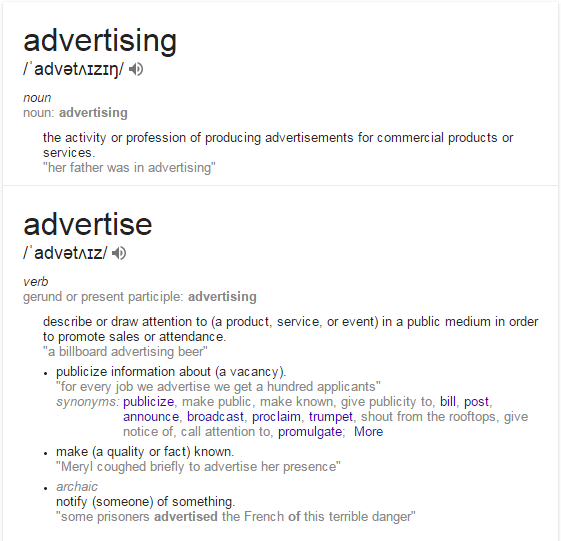Why complain about marketing ?

For the first time in a long time, I actually spent some me time last night and watched some actual live broadcast television. Nothing in particular, just had the TV on and channel hopped for a while before settling in with a beer or three.
As I was watching “live TV” on my Sky box and not a recorded show I endured the adverts that litter the shows and it got me thinking, as stuff often does. What makes a good advert?
I also got to thinking about the key differences between marketing and advertising, the reason for that is there are several key figures within tobacco control that interchange the two thinking they mean the same whereas they don’t. At all. At least not from the perspective of a business.
Anybody remember this genius advert from Honda?
The question is, what makes it so memorable? Is it the fact that it was, incredibly clever? Or is it something else? Those of you who do remember the advert, how long do you see anything to actually do with Honda, or the product they are trying to sell?
I’ll save you the trouble, ten seconds. Ten seconds, at the end of the advert you see the Accord, a banner and then finally the Honda logo. That’s it, the rest of the advert is the fun clever stuff. I remember seeing this during the Brazilian GP, and wondering just how many takes it took to get it right. Over 600. It was, and in my opinion, still is one of the cleverest, if not the cleverest TV commercial ever to be shown.
How about this one from Nike?
Nike - Just Do It - ‘Possibilities’ :90 from scott boyajan on Vimeo.
Product placement within the ad itself is clever and subtle, with the exception of the first ten seconds and the last ten.
Both of these companies spent a large sum of cash in putting these together, and it shows. In both, they are relying on brand recognition to advertise the product. Let’s face it, you see the Honda badge, or the Nike tick and you know the products and brand.
All very interesting I hear you cry, what has this to do with vaping. A heck of a lot actually.
We all know that the ANTZ continue to pound the “think of the cheeeldren” drum with their “marketing to kids” rhetoric. Well I have news for them.

The Google definition of marketing
Marketing is a business process where goods or services go from concept to the consumer. Basically, it includes product selection (or development), price determination, distribution channel and the promotional strategy.
The promotional strategy is where the vendor decides which market segment to aim the advertising at, and which platforms to use to do so. This would normally include TV, magazines and newspapers. A few use ad placements on Google and other websites, and often they would pay a reasonable sum of cash to do so.
So what exactly is the market segment for most vapor product vendors? That is ludicrously simple. Most of the commercials are aimed at existing smokers to try to get them to switch, or existing vapers to try to get them to buy some new shiny kit.
By the business definition, vape vendors are not marketing to kids. In comparison, the Google definition does state the “promoting and selling of products or services, including market research and advertising”. In a shameful display, both terms are frequently used in the wrong context. I myself have indeed been guilty of interchanging the two, not down to a lack of understanding, but out of laziness.

The Google definition of advertising
“To advertise” by definition is to “describe or draw attention to a product, service or event” to promote sales. Advertising takes many forms ranging from the billboard signs, magazines, TV, radio and even the internet. Technically, if the ANTZ want to make any kind of song and dance out of “marketing” they would need to look at the definition of the term. This is why Marketing and Advertising Agencies exist. Marketing takes care of the target, whilst Advertising takes care of the actual commercials, posters and magazines.
This brings me nicely to my next point. How do vape vendors advertise their products given the restrictions in most places, the UK of course being the most restrictive and reactionary to vaping ads with most of the vape related ads receiving a complaint which gets it banned.
Not so for NZVAPOR, they’ve decided to take a slightly different approach and use an “older” medium. Radio broadcast. They hope that in advertising via “Open to Air advertising” they can reach an audience not previously considered. It is definitely a unique avenue to explore, given that there are a lot of folks that use vapor products that are not on social media. This is a good sign that these guys have thought about their target market areas, and are working to increase the product exposure. This is the principle of marketing strategy. Identify your target, find the best route and then develop an advertising strategy and commercial to sell the product.
Remember, there is a vast majority of folks that only watch TV or listen to the radio, they don’t use the Internet to look for or buy vapor products, but would most likely do other kinds of online shopping.
Vuse, a tobacco industry vapor product along with VIP and blu regularly advertise their kit on TV, as do some of the vaping industry and in the UK at least, have prompted quite a backlash with the majority of commercials that had a complaint being banned.
There is, in the UK at least a list of what can and cannot be shown in a TV advert thanks to section 33 of the Committee of Advertising Practice (CAP). Unfortunately, even though vendors in the UK try their best to adhere to these guidelines, complaints still roll in to the Advertising Standards Authority and in most cases they are upheld. Even if there is just a single complaint. Oddly enough, the commercials that are not actually banned (in most cases) are the ones that originate from the tobacco industry.
With so many strict guidelines and complaints being upheld based purely on “perception” and “intent” rather than actual content, it is a wonder that any vapor product ads ever get shown. This does lead on to another point, how the vape industry presents themselves.
I won’t go into too much detail on that, as it has already been covered very nicely by the awesome VapeMeStoopid here and here. Needless to say, vendors seem to be choosing the easy route when it comes to advertising and presentation instead of doing some legwork and researching their target market to come up with a suitable ad and look that isn’t crass and frankly tasteless.
Don’t get me wrong, as a mid thirty something bloke I don’t mind looking at the female form, fully clothed or otherwise (that’s ALL female forms by the way), I do mind that it is used as an advertising tool. I get it though. Sex sells, and in some exceedingly rare cases taking advantage of that is not necessarily a bad thing, of course I am excluding products and services related to sex directly.
Can you imagine your laptop being advertised with a scantily clad, busty woman? Or your mobile phone? No. Didn’t think so. So why on earth is it deemed “acceptable” to do it for vapor products? Not just the visual adverts, but the product name choices too.
The short answer is it isn’t acceptable. Advertising within the vaping “industry” is becoming increasingly lazy and it is possibly one of the biggest issues that needs to be addressed to correct the perceptions of non-vaping public.